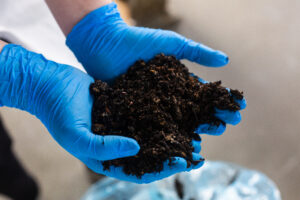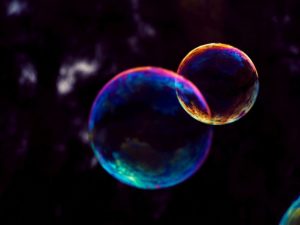Aquaculture: A Regional Look at a Global Industry
Introduction
Globally, about 2% of overall calorie intake and 15% of protein intake comes from seafood both wild-caught and farmed. The most recent available data on global seafood production puts the total annual amount in 2015 at 138 Mt (million metric tons), of which 60% was wild-capture landings (including 20 Mt reduction fisheries) and 40% aquaculture production. Of this 40%, around 75% of the tonnage comes from finfish (as opposed to molluscs, crustaceans, etc.), and finfish account for 62.5% by value. Since 1990, wild-capture tonnage has been relatively stable while aquaculture has been growing at 6.5% per year.
Fish farming, and aquaculture generally, has grown over the past 30 years, as captured fish numbers stagnated or even declined while demand soared. Aquaculture’s contribution to global fish supply has grown from 7% in 1980 to 40% today. Within the next few years, over 50% of the fish we eat will have been raised in a farm rather than caught by a fisherman.
Regional variations are important in both the amount of fish farming activity and in the diversity of species being farmed. Norway, Chile, and Canada are world leaders in salmon farming, whereas China is the largest producer of farmed fish by volume due to its enormous carp industry.
North America
Canada is the fourth-largest producer of farmed salmon in the world. Atlantic salmon is Canada’s top aquaculture export, although Chinook and Coho species are also farmed. The United States is Canada’s largest export market for farmed salmon, with a market value of around $753.3 million in 2017. However, Chile remains the largest exporter of salmon to the US, with 139,300 tonnes worth $1.63 billion (in 2017). Salmon represents an average of 70% total volume of Canadian aquaculture, and is mainly produced in British Columbia in farms sited in near-shore locations. In the US, salmon farming is largely located in Maine and Washington state, although the continued presence of a salmon farming industry in Washington is in jeopardy since a large salmon escape at a Cooke Aquaculture-run site at Port Angeles in the Puget Sound resulted in the state commissioner for public lands terminating the company’s lease for that farm. Washington has since legislated to stop offering leases and permissions for the farming of non-native fish from 2022, by which time many existing leases will have run out and are unlikely to be renewed. This follows similar legislation on open-water farming in Alaska, California, and Oregon. Cooke has said that it will respect the new law and discontinue farming non-native species by 2025, but also intends to sue lawmakers to recover the company’s $76 million investment.
Catfish represents the largest form of aquaculture in the US, although the industry is under threat. Due to the rising cost of feed, which can account for around 40% of a farm’s costs, there has been increasing competition from Southeast Asian markets such as Vietnam and China. This has led to anywhere from 60-70% of US catfish supply coming from imports. Simultaneously, there has been an 80% decrease in the amount of pond space dedicated to catfish within the US. Despite catfish being a low-value crop relative to other fish species, there has been good technological innovation in the space around water aeration and operational efficiency, and the sector may soon benefit from regulation that would hold foreign imports to similar safety standards around water usage and preparation that apply to farmers in the US.
The shrimp industry offers another insight into why the US may be running a high trade deficit in seafood. There was a large increase in US shrimp production around 2002-2004, with much of that production (70%) based in Texas. The spike in production correlates with a species recovery that resulted from the development of a strain of shrimp that was resistant to Taura Syndrome Virus. Three main factors led to a production slump that has continued to the present day.
- In 2004, the Southeast Asian shrimp harvest contained levels of antibiotics and chloramphenicol that prevented sale in the EU. Tolerances in the US market were higher, and so the US was flooded with low-priced shrimp.
- Increased regulation around aquaculture practices in the US made domestic production more expensive.
- Aquaculture feed prices increased by around 25% from 2003-2007. Some aquaculture farms switched species to catfish and tilapia, while many are no longer operational.
The result is that in 2017 the US imported 664,000 tons of shrimp worth $6.54 billion, a 10% increase in volume and a 12% increase in value from 2016, with most coming from India (213,956 tons, worth $1.5 billion).
There is an ongoing effort to promote an offshore aquaculture industry in the US. In 2016, the National Oceanic and Atmospheric Administration (NOAA) began opening up the Gulf of Mexico to fish farmers, hoping to capitalize on the existing oil and gas infrastructure and good farming conditions present in that body of water. So far, only Kampachi Farms has been granted a trial site, using the Velella Epsilon cage as a test for future commercial scale facilities. However, an arduous permissions process is still holding back the industry, compounded by the recent defeat of the AQUAA Bill in Congress, which had hoped to streamline the permit process. There is more progress with inland farming systems, where permissions are more often granted at state level only; however, the technological issues these farms face will be covered in an upcoming blog.
Europe
The aquaculture industry in Europe is much more diversified in species farmed, and yet dominated by a few key countries. The continent farms over 40 different species, and produces 3 million tonnes of fish and molluscs with an ex-farm market value of around $10.5 billion.
Excluding Norway, Iceland, and Turkey (which are not in the European Union), five EU member states (Spain, the United Kingdom, France, Italy and Greece) account for three quarters of both production value and production volume, while 10 species make up 90% of the production, in value and volume terms alike. Nevertheless, the sector shows a high diversity and specialization of species and producing countries.
The European Union, through its European Maritime and Fisheries Fund (EMFF), has been driving the industry through increased coordination, planning, and application streamlining. While the EMFF’s brief covers fisheries more widely, aquaculture accounts for 21% of the €6.4 billion budget.
However, Norway is a key country in the global aquaculture market, as it is the world’s largest producer of farmed salmon, producing 1.78M tonnes. For comparison, Chile, the second largest producer of farmed salmon and largest supplier to US, produced 850,000t. For Norway, this has led to a wealth of innovation in aquaculture technology. Cages being used in the US and other regions tend to have their roots in Norway, with companies such as Seafarming Systems and Nordic Aquafarms building offshore cages for global customers. Furthermore, in talking to Aquabyte CEO Bryton Shang, it has taken Silicon Valley sensor and software expertise combined with Norwegian aquaculture know-how to drive innovation in on-farm camera sensing equipment. His team is divided evenly between the two locations.
Southeast Asia
 The main aquaculture economies are Vietnam, Indonesia, Philippines, Malaysia, and Myanmar. In 2015, the region’s farmed production accounted for about 54.9% of the region’s total fishery production by quantity and 40.6% by value. From 2011 to 2015, Southeast Asia’s total production from aquaculture steadily increased at about 11.6% per year.
The main aquaculture economies are Vietnam, Indonesia, Philippines, Malaysia, and Myanmar. In 2015, the region’s farmed production accounted for about 54.9% of the region’s total fishery production by quantity and 40.6% by value. From 2011 to 2015, Southeast Asia’s total production from aquaculture steadily increased at about 11.6% per year.
While there is plenty of activity in the region, the market is comprised mainly of SME producers, driven by many governments seeing shrimp farming as a way to alleviate poverty in coastal regions. These policies have sometimes been at the expense of wetland ecosystems, partly because building shrimp ponds near tidal areas save farmers the expense of high elevation water pumps and long-term pumping costs. There are efforts to address this issue such as the Aquaculture Stewardship Council’s Shrimp Standards, which take into account biodiversity, feed, pollution, diseases, and antibiotics. In the private sector, Cargill has opened a slew of Innovation Centres in the region to promote innovative, effective, and environmentally responsible farming practices. The Centres are located in Vietnam, Thailand, and India, with another planned in Indonesia. US barramundi producer Australis, after establishing a market and demand in the US with RAS systems, established volume production of barramundi fish pens in Vietnam.
China
China accounts for around 35-40% of global aquaculture production, an increase of 30-35% since 1980. But while headline figures make China the largest aquaculture producer globally, a good portion of this is accounted for by its domestic market for carp. Carp is the major species farmed in China, accounting for about 44% of total aquaculture production. Molluscs, and especially mussels, are another major marine species group farmed that account for approximately 33% of Chinese aquaculture output. While the farming of traditional species has developed, there has been a trend towards high-value species such as mitten crab, prawns, eel, frogs, crawfish, turtle, sturgeon, halibut, Japanese flounder, groupers, pearls, abalone, sea cucumber, and more. The production of high-value species now accounts for about 30% of total aquaculture production, compared to only 1% in 1979.
China exported $2.7 billion of seafood to the US in 2017, while importing $1.2 billion. However, with the recent trade tariff exchange between the two countries, there is likely to be some change in this US trade deficit. A portion of the US exports are seafood goods shipped to China for processing, likely to return to US markets for sale, which will compound the issue further.
China is also making moves into the offshore salmon farming market, as the recent announcements of some of the world’s largest offshore cages go to trial in the Yellow Sea.
A Summary of Key Regional Differences
- The US aquaculture industry is woefully unsupported, and running a huge trade deficit ($2.3 billion with Canada, $1.2 billion with China, $11 billion globally) despite having key infrastructure, suitable waters, and some leading innovators to support it.
- Europe (as a region) has a well-marshaled aquaculture sector that is competitive while remaining committed to environmental values. Norway, due to its high-value crop and the advanced stage of its salmon farming industry, is a hub for offshore farming innovation.
- Southeast Asia is a highly fragmented and diverse aquaculture region. While in some cases the creation of an industry has prompted damaging environmental impacts, there are private and public sector initiatives to redress this, with Innovation Centres forming throughout the region.
- By volume and value, China is the largest player in this market. The country has work to do to sustain an industry that has been built from nothing over 30 years, but it is also developing aquaculture farms on an unprecedented scale with projects in the Yellow Sea. The country’s growing domestic appetite for other fish species will continue to drive non-traditional aquaculture practices.


